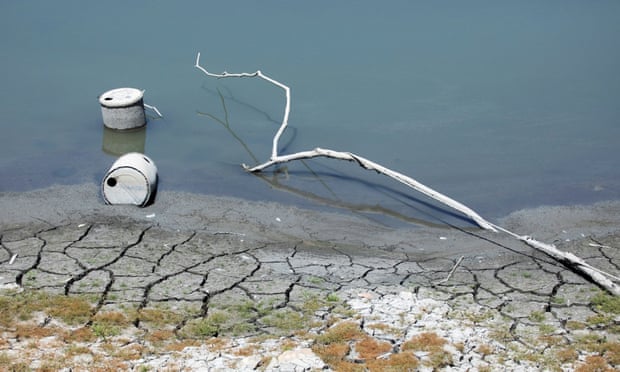By Fiona Harvey : The Guardian : 17-06-2021.
Countries urged to take urgent action on managing water and land and tackling the climate emergency.
Drought is a hidden global crisis that risks becoming “the next pandemic” if countries do not take urgent action on water and land management and tackling the climate emergency, the UN has said.
At least 1.5 billion people have been directly affected by drought this century, and the economic cost over roughly that time has been estimated at $124bn (£89bn). The true cost is likely to be many times higher because such estimates do not include much of the impact in developing countries, according to a report published on Thursday.
Mami Mizutori, the UN secretary general’s special representative for disaster risk reduction, said: “Drought is on the verge of becoming the next pandemic and there is no vaccine to cure it. Most of the world will be living with water stress in the next few years. Demand will outstrip supply during certain periods. Drought is a major factor in land degradation and the decline of yields for major crops.”
She said many people had an image of drought as affecting desert regions in Africa, but that this was not the case. Drought is now widespread, and by the end of the century all but a handful of countries will experience it in some form, according to the report.
“People have been living with drought for 5,000 years, but what we are seeing now is very different,” Mizutori said. “Human activities are exacerbating drought and increasing the impact”, threatening to derail progress on lifting people from poverty.
Developed countries have not been immune. The US, Australia and southern Europe have experienced drought in recent years. Drought costs more than $6bn a year in direct impacts in the US, and about €9bn (£7.7bn) in the EU, but these are also likely to be severe underestimates.
Population growth is also exposing more people in many regions to the impacts of drought, the report says.
Drought also goes beyond agriculture,said Roger Pulwarty, a senior scientist at the US National Oceanic and Atmospheric Administration and a co-author of the report.
He pointed to the Danube in Europe, where recurring drought in recent years has affected transport, tourism, industry and energy generation. “We need to have a modernised view of drought,” he said. “We need to look at how to manage resources such as rivers and large watersheds.”
Changing rainfall patterns as a result of climate breakdown are a key driver of drought, but the report also identifies the inefficient use of water resources and the degradation of land under intensive agriculture and poor farming practices as playing a role. Deforestation, the overuse of fertilisers and pesticides, overgrazing and over-extraction of water for farming are also major problems, it says.
Mizutori called for governments to take action to help prevent drought by reforming and regulating how water is extracted, stored and used, and how land is managed. She said early warning systems could do much to help people in danger, and that advanced weather forecasting techniques were now available.
She said working with local people was essential, because local and indigenous knowledge could help to inform where and how to store water and how to predict the impacts of dry periods.
The report, entitled Global Assessment Report on Disaster Risk Reduction: Special Report on Drought 2021, was published on Thursday, and will feed into discussions at vital UN climate talksk known as Cop26, which are scheduled to take place in Glasgow in November.


Recent Comments